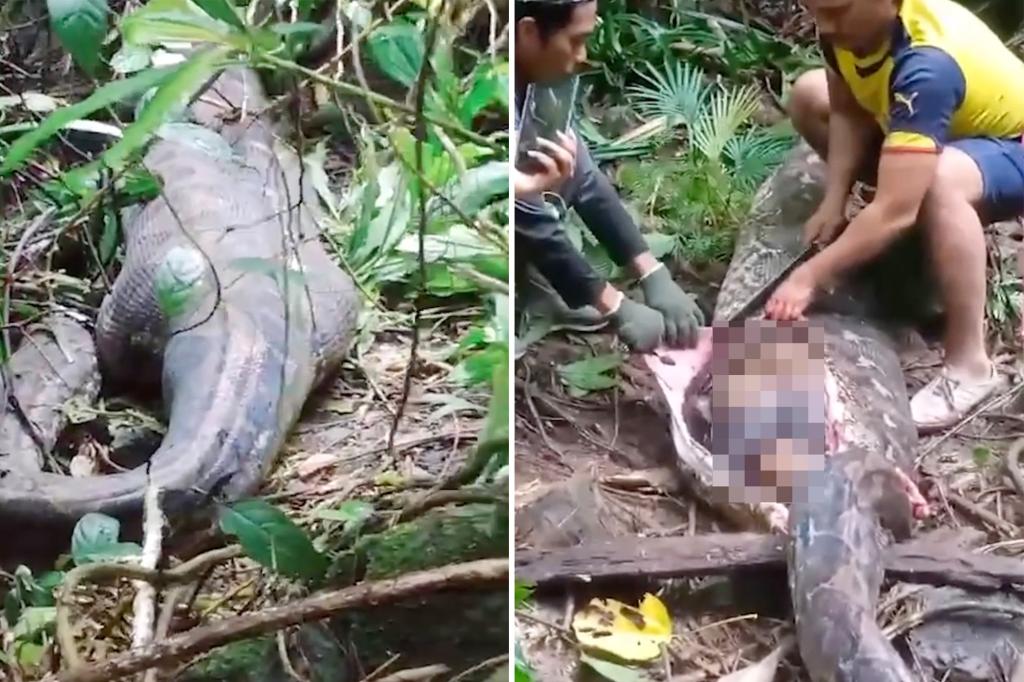A mother of four named Farida went missing in Indonesia and was found the next day inside a 16-foot python. The horrifying moment was captured in video and photos as Farida’s body was removed from the snake. Farida, who hailed from Kalempang village in South Sulawesi province, disappeared on June 6, and her husband became suspicious after finding her belongings, leading villagers to search the area. They discovered a python with a large belly, which upon being cut open, revealed Farida’s head immediately. The reticulated python, the world’s longest snake, is native to Indonesia and Southeast Asia, using its sharp teeth to squeeze and swallow its prey whole. While rare, there have been instances of pythons killing people in Indonesia in recent years.
The discovery of Farida’s body inside the python has shocked the local community and gained international attention. Video and images of the snake being cut open and Farida’s body being extracted spread quickly, sparking discussions about the dangers of encountering wild animals in Indonesia. The incident serves as a reminder of the potential risks faced by individuals living in areas where large predators like pythons are present. The tragic outcome has highlighted the importance of safety measures and awareness when it comes to wildlife encounters in such regions.
The incident involving Farida and the python has raised questions about the interaction between humans and wildlife in Indonesia. As urbanization and deforestation continue to encroach upon natural habitats, encounters between people and dangerous animals may become more common. Efforts may be needed to educate the public on how to coexist with wildlife safely and prevent such tragic incidents from occurring in the future. The incident has also shed light on the need for conservation efforts to protect both endangered species like the reticulated python and human lives in the region.
The reticulated python’s ability to consume large prey like Farida whole is a natural behavior that has been documented throughout history. While such incidents are rare, they serve as a reminder of the power and capabilities of these apex predators. Conservationists may use this opportunity to raise awareness about the importance of preserving the natural ecosystems that support these species. The tragic loss of Farida has sparked discussions about human-wildlife conflict and the need for effective strategies to mitigate the risks posed by encounters with large predators like pythons in Indonesia.
The search for Farida and the subsequent discovery of her body in the python’s stomach have left the community in mourning. The sudden and tragic nature of her death has deeply affected her family, friends, and neighbors. The incident has also generated sympathy and support from people around the world who have been following this shocking story. Authorities may use this opportunity to review safety measures and response protocols for wildlife-related incidents in the region, in order to prevent similar incidents from happening in the future.
In conclusion, the case of Farida being found inside a 16-foot python in Indonesia has shone a spotlight on the complex dynamics between humans and wildlife in the region. The incident has led to discussions about safety, conservation, and coexistence with predators like the reticulated python. While tragic, this event may serve as a catalyst for increased awareness, education, and measures to protect both endangered species and human lives in Indonesia. The memory of Farida’s death will not only serve as a cautionary tale but also as a call to action for better wildlife management practices in the future.


